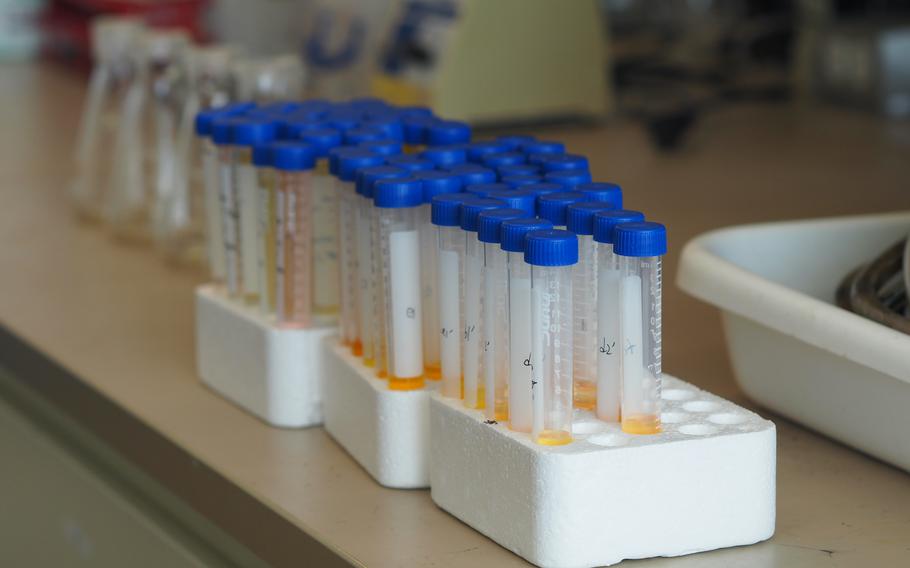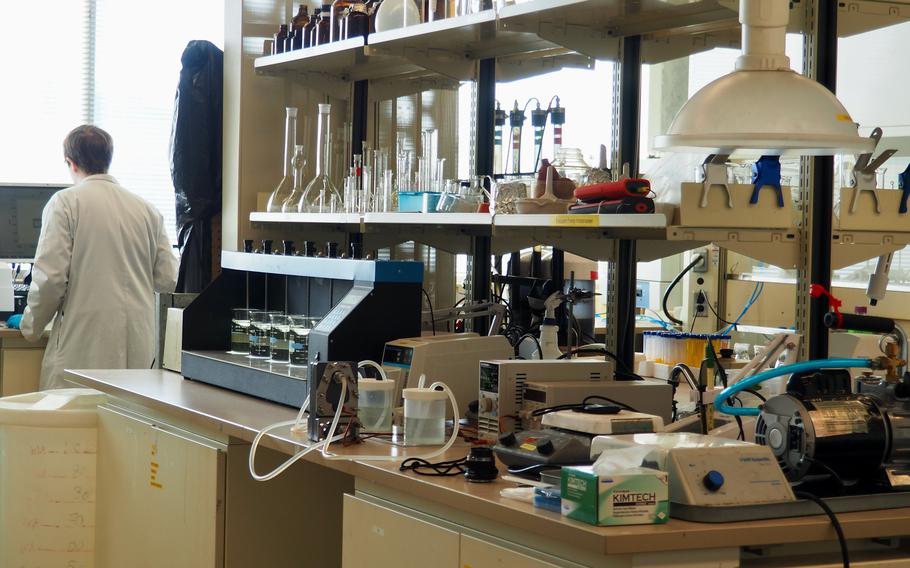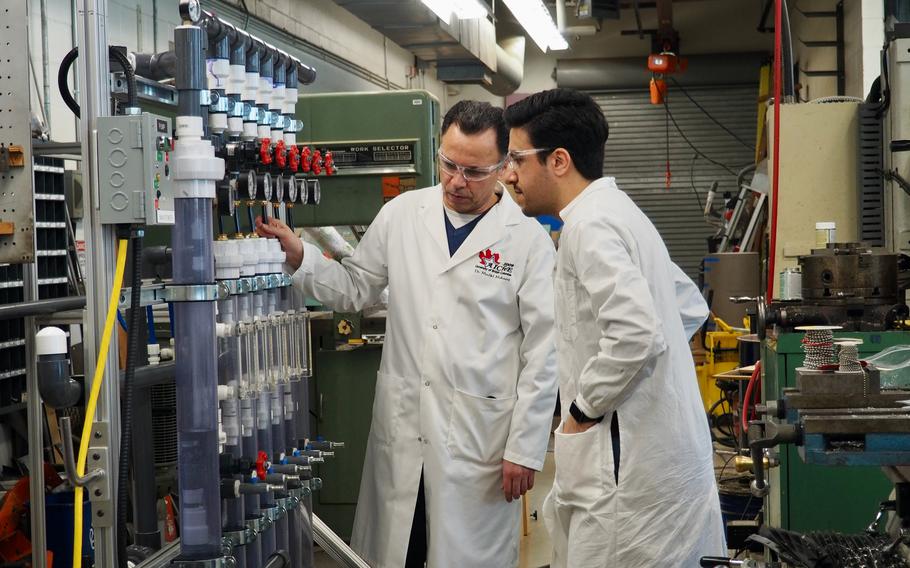
Water samples containing different concentrations of pollutants. (Lou Bosshart/University of British Columbia)
Canadian researchers said they have developed a method to filter toxic “forever chemicals” from water and potentially destroy the long-lasting compounds permanently.
Commonly known as “forever chemicals” because they can persist in the environment for years, these hazardous compounds have long troubled environmentalists and regulators. Their harmful effects on human health are well documented, but their ubiquitous use and the challenges in breaking them down have complicated efforts to eliminate them.
Pressure to do so is growing. In March, the Environmental Protection Agency proposed the nation’s first drinking-water standards requiring water utilities to reduce levels of PFAS — perfluoroalkyl and polyfluoroalkyl substances.
The new technology, described by one of its developers as a “Brita filter, but a thousand times better,” could help address the problem, experts say.
“The potential impact will be huge,” said Madjid Mohseni, a professor of chemical and biological engineering at the University of British Columbia who led the research. “We are hoping to be able to take this to be part of the collective toolbox that we have for addressing PFAS contamination of our water supplies.”

Overview of one of the two labs where the Mohseni group works. (Lou Bosshart/University of British Columbia)
What are PFAS?
Polyfluoroalkyl and perfluoroalkyl substances are a class of thousands of different chemicals with varying properties. The highly durable chemicals have been used for decades to make nonstick cookware, moisture-repellent fabrics and flame-retardant equipment, and they are found in other commonly used consumer goods such as cosmetics and food packaging.
Several U.S. states and other countries have banned certain types of PFAS, and many major companies say they have discontinued their use, but the compounds have shown up in the water supplies of communities across the country and the world. The chemicals have been linked to infertility, thyroid problems and several types of cancer.
Technologies already exist to remove PFAS from water, but Mohseni and other experts say these approaches have limitations.
Activated carbon, for example, can filter what is known as long-chain PFAS but does not as effectively trap the shorter-chain variants of the chemicals. Short-chain PFAS, some of which can be toxic at low doses, are becoming more prevalent as many manufacturers use them as a replacement for the long-chain compounds.
Existing methods also typically create waste products that contain high concentrations of PFAS, which often end up in landfills or are incinerated, said Erik Olson, a senior strategic director at the Natural Resources Defense Council.
From landfills, the harmful chemicals could leech back into the environment. Burning them is not ideal, either. “Only extremely high-temperature incineration can even start to destroy PFAS,” Olson said. “Normal incineration just simply sends PFAS up the smokestack.”

Madjid Mohseni, left, a professor of chemical and biological engineering, and postdoctoral fellow Ehsan Banayan Esfahani look at a pilot water-treatment system in March. (Lou Bosshart/University of British Columbia)
A reusable PFAS filter
Mohseni said the material his team developed — which looks like tiny porous plastic beads — can remove long- and short-chain chemicals at rates that match or exceed industry standards. The PFAS it captures could be stripped away, also making the beads potentially reusable or recyclable, he said.
Additionally, Mohseni said, the team engineered techniques designed to break the leftover PFAS down into harmless compounds.
The beads eventually could be used in products to filter water in homes, industrial sites and at municipal levels, he added. However, for in-home applications, users would have to send the used filters to centralized locations for regeneration or recycling, and for the PFAS to be broken down fully — somewhat like how some used coffee pods are sent back to manufacturers for recycling, Mohseni said.
His team’s findings have been published in several peer-reviewed journals.
Although the technology is promising, experts not involved in the research say it has yet to be proved in real-world settings at scale. The UBC research team has launched pilot trials in British Columbia, but none of the sites are yet sources of drinking water.
“We’re a ways off from really having a clear solution,” Olson said. “Our biggest worry still is that we don’t exactly know how to totally destroy PFAS effectively at a commercial scale.”
The ‘gold standard’ PFAS solution
Removing the chemicals from water and breaking them down is only part of the solution to the PFAS problem, said Cora Young, an associate professor of chemistry at York University in Toronto who studies the chemicals.
“Destroying PFAS that already exist is a useful thing, but a lot of other approaches have to be used to actually reduce its impact as an environmental problem,” Young said.
That includes regulations and other efforts to hold polluters accountable.
“The gold standard solution is to no longer have this stuff made,” said Olson, “and, therefore, we’re not polluting the whole environment with it.”